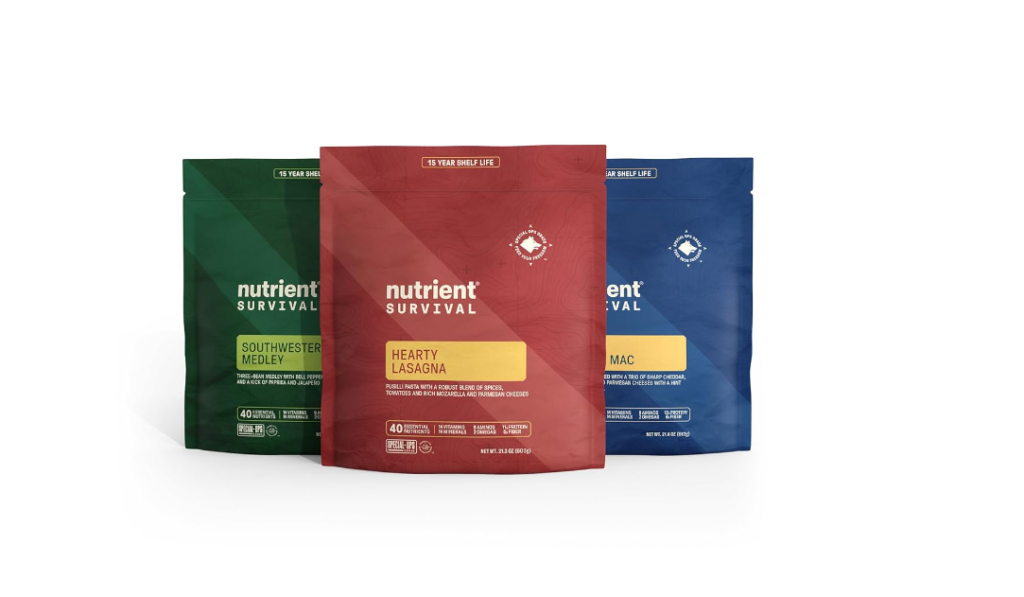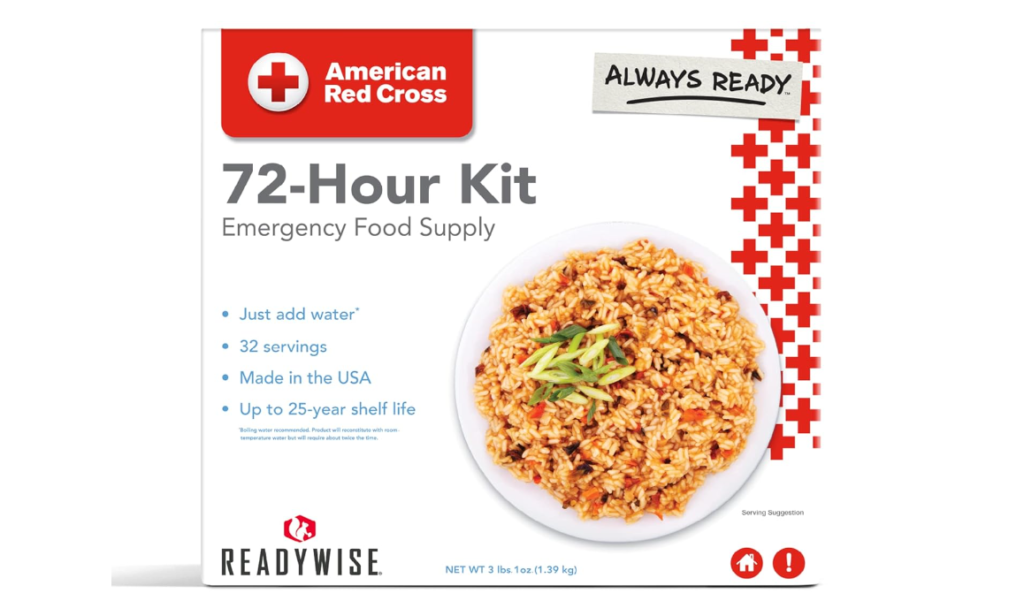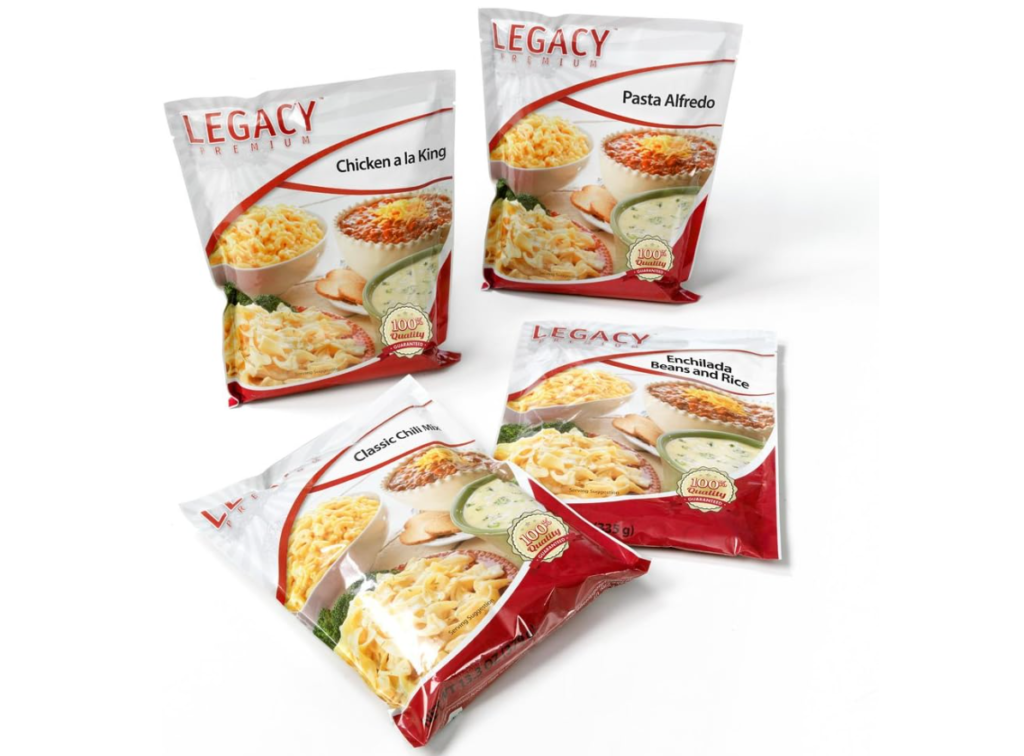MREs, or Meals, Ready-to-Eat, are self-contained, individual field rations designed for military personnel. Originating as a replacement for canned military rations in the 1980s, MREs have evolved significantly. Initially developed to enhance soldiers’ battlefield endurance, these rations have undergone continuous improvements in variety, taste, and nutritional value. MREs are engineered to withstand harsh conditions, providing a balanced diet that requires no additional water or cooking. Their compact, durable packaging ensures they can be efficiently distributed and consumed in diverse operational scenarios, from combat zones to natural disaster relief efforts.
Components and Nutritional Value of MREs

As a military ration, each MRE is a comprehensive meal kit with 1,100-1,300 calories. It includes a main entree, side dish, bread or crackers, spread (like peanut butter or jelly), dessert, candy, and assorted beverages. MREs are designed to meet a third of daily nutritional requirements, balancing protein, fat, and carbohydrates. They also contain essential vitamins and minerals. MREs cater to diverse dietary needs, offering Halal and Kosher options. Over time, MREs have evolved to include a variety of menus, including vegetarian and ethnic choices, reflecting the changing dietary preferences and needs of service members.
Historical Evolution from C-rations to MREs
Transitioning from C-rations to MREs marks a significant evolution in military field rations. C-rations, used during World War II in Korea and Vietnam, were replaced by MREs in the 1980s to provide better nutrition and variety. MREs have continually evolved, offering 24 menus, including vegetarian and ethnic options, ensuring inclusivity and catering to diverse palates. These menus are updated regularly based on feedback and nutritional research. The current MRE menus offer a range of entrees, from traditional meat-based dishes to globally inspired cuisine, ensuring that all service members have access to meals that meet their dietary preferences and requirements.
Manufacturing and Quality Control of MREs
In the military, manufacturing MREs (Meals, Ready-to-Eat) is a meticulous process, ensuring that each ration meets the high standards required for field use. The production begins with selecting quality ingredients, followed by preparing various components like entrees, sides, and snacks. These items are assembled into the final MRE package, designed to be durable and withstand extreme conditions.
Quality control is paramount in MRE manufacturing. The process adheres to stringent standards set by various regulatory bodies:
- USDA (United States Department of Agriculture): Oversees the safety, quality, and nutritional aspects of the food products used in MREs.
- FSIS (Food Safety and Inspection Service): Ensures that the meat and poultry components meet safety standards to prevent foodborne illnesses.
- FDA (Food and Drug Administration): Regulates the safety of food products and packaging materials, ensuring that MREs are free from harmful substances.
- FSSC 22000 (Food Safety System Certification): A globally recognized standard that certifies the MRE manufacturing process for effectively managing food safety responsibilities.
MREs are designed with a shelf life of approximately three years at 80 degrees Fahrenheit, which can vary based on storage conditions. Proper storage in excellent, dry places is essential to maintain quality and safety. The packaging technology used in MREs is advanced, ensuring the meals remain safe and consumable even in diverse and challenging environments. This comprehensive approach to manufacturing and quality control guarantees that MREs are reliable, nutritious, and safe for consumption by military personnel in various operational scenarios.
MREs in Military Use
In the U.S. Armed Forces, MREs (Meals, Ready-to-Eat) are essential for sustaining troops in the field. They provide a reliable food source in environments where traditional cooking is impractical. MREs are tailored for various operations, with menus adapted to meet diverse nutritional needs and preferences, including ethnic and vegetarian options. Continuous feedback from field personnel drives taste, variety, and packaging improvement. This adaptability ensures that MREs not only meet soldiers’ caloric and nutritional requirements but also cater to their morale and comfort under challenging conditions.
MREs in Disaster Relief and Humanitarian Aid
MREs are crucial in disaster relief and humanitarian aid, providing a stable food supply during emergencies. Their ease of distribution and no-preparation-required nature makes them ideal for rapid deployment in natural disasters and crises. MREs are distributed through well-coordinated channels, ensuring timely and efficient delivery to affected areas. Notable examples include their use in hurricane relief efforts and international aid missions, where MREs have been instrumental in sustaining both disaster victims and relief workers. Their versatility and shelf-stability make MREs a vital resource in global humanitarian assistance.
Commercial Availability and Civilian Use of MREs
Initially exclusive to military use, MREs are now widely available for civilian purchase. Civilian MREs, while similar to their military counterparts, often vary in menu options and packaging. These rations are ideal for various scenarios like camping, hiking, and emergency preparedness due to their long shelf life and ease of use. They provide a convenient, nutritious meal option without cooking facilities. The civilian market offers a range of MREs, and from our selection on Amazon, here are the top 5 picks known for their quality, taste, and nutritional balance, catering to outdoor enthusiasts’ and emergency preppers’ needs.
The best 5 MRE in 2024
The Mountain House Emergency Food Supply

The Mountain House Emergency Food Supply for 3 Days is a convenient and stackable kit designed for emergencies. It contains 18 servings of various meals, providing approximately 1,706 calories daily. The kit includes nine bags of breakfast, lunch, and dinner options, such as Granola with Milk and blueberries, Biscuits and gravy, Chicken Fried Rice, Chicken and dumplings, and Beef Stroganoff with Noodles.
Each meal is freeze-dried and has a shelf life of 30 years, making it ideal for long-term storage. The product is praised for its taste, ease of preparation, and lightweight packaging, making it suitable for camping, backpacking, and emergency preparedness. Customers appreciate the variety and quality of the meals, noting their good value for money. The product dimensions are 12.75 x 9.88 x 8.88 inches, weighing 3.55 pounds.
The Patriot Pantry Gluten-Free Emergency Food

The Patriot Pantry Gluten-Free Emergency Food Supply offers 120 servings of gluten-free emergency food designed to last up to 25 years in storage. This kit is ideal for those preparing for crises while adhering to a gluten-free diet. It includes 12 different meal options packed in a sturdy, slim tote (measuring 18 x 12 x 7 inches) for convenient and long-term storage. The meals come in resealable Mylar bags, ensuring a shelf life of up to 25 years unopened and up to 1 year after opening. This product does not require refrigeration and is easy to prepare, making it suitable for camping trips. The kit’s focus on long-term storage and gluten-free options makes it a unique choice for emergency preparedness.
The Nutrient Survival Southwestern Medley

Amazon’s Nutrient Survival Southwestern Medley product is a convenient and nutritious meal option designed for emergency preparedness and outdoor activities. This medley includes a flavorful mix of three beans, peppers, rice, paprika, and jalapeño, offering a hearty and satisfying meal. Just add hot water, stir, and cover for a complete meal. Each serving contains 40 essential nutrients and 0.42 oz of protein, including 14 essential vitamins and minerals like biotin, folate, riboflavin, calcium, and omega 3 and 6.
The product boasts up to 15 years of shelf life due to its freeze-drying process, which locks in nutrients and preserves natural flavor without artificial colors, flavors, or preservatives. The product is made in the USA, ensuring top-quality, healthy, and delicious nutrition, perfect for stress, quick snacks, performance enhancement, travel, preparation supplies, or off-grid living.
American Emergency Freeze-Dried Food Kit

The American Emergency Freeze-Dried Food Kit is designed for disaster preparedness, especially for hurricanes. It includes 32 servings of various meals, such as breakfasts, main courses, and an alternative to whey milk. The meals are easy to prepare in any emergency, requiring only water. The food is stored in durable, long-lasting bags, ensuring a shelf life of up to 25 years. This kit offers a mix of freeze-dried meals, perfect for emergency rations or outdoor activities like hiking and camping.
Emergency Preparedness Entree Meal Samples

The Emergency Preparedness Entree Meal Samples by Legacy Premium Food Storage include 16 large servings, totaling 6,000 calories, across four different entree options. This product stands out for its ample serving sizes, low cost per calorie, and 25-year shelf life. It’s 100% GMO-free and comes in 4-serving Mylar pouches with oxygen absorbers for longevity. Ideal for hiking, backpacking, camping, or long-term emergency preparations, these meals are simple to prepare, requiring only water.
Consideration before Buying MRE
When considering the purchase of Meals Ready to Eat (MREs) for emergency preparedness or outdoor activities, there are three significant factors to take into account:
- Water Availability: MREs often require water for preparation, making it essential to have a reliable water source. Access to clean water can be limited in emergencies, so it’s crucial to include water storage in your planning. Additionally, consider the water each MRE requires and ensure you have enough to hydrate and prepare meals. Water purification methods, like filters or purification tablets, should also be part of your emergency kit to ensure you can safely use available water sources.
- Taste and Palatability: Before investing in bulk purchases of MREs, buying a small quantity to sample is advisable. The taste and palatability of MREs can vary significantly, and you must find them acceptable, especially in stressful situations where good morale is crucial. Sampling helps you identify which meals you enjoy and can tolerate over an extended period. This step ensures that your investment in emergency food is practical and enjoyable, essential for maintaining a good quality of life in challenging circumstances.
- Allergies and Dietary Restrictions: It’s vital to check the ingredients of MREs for potential allergens. If you have food allergies or sensitivities, look for MREs that are clearly labeled and safe for your consumption. Additionally, consider any dietary restrictions, such as vegan, kosher, halal, or gluten-free requirements. Many MRE manufacturers now cater to various dietary needs, but it’s important to carefully read labels and product descriptions to ensure the meals meet your specific nutritional requirements. This consideration is crucial not only for comfort but also for avoiding health issues during emergencies.
In summary, when selecting MREs, it’s essential to ensure you have adequate water resources for preparation, find palatable meals, and choose options that align with any dietary restrictions or allergies you may have. These considerations will help ensure that your emergency food supply is practical and suitable.
MRE FAQ :
How much does 1 MRE cost?
The cost of one MRE varies, typically ranging from $7 to $10 per meal. Prices can fluctuate based on factors like the supplier, menu variety, and purchase quantity. Bulk purchases often result in lower per-unit costs.
What does a MRE stand for?
MRE stands for “Meal, Ready-to-Eat.” It is a self-contained, individual field ration designed for military personnel, providing a complete, nutritious meal in a portable package.
How many MREs would a person need to eat in a day to get a full day of nutrients?
To meet a full day’s nutritional needs, a person would typically need to consume three MREs. Each MRE is designed to provide about one-third of the daily recommended vitamins, minerals, and calories.
Is it OK to eat MRE?
Yes, it is generally safe to eat MREs. They are designed for consumption under various conditions and are a reliable source of nutrition. However, they are intended for occasional use, not as a permanent replacement for fresh food.
In the end :
The significance of MREs in modern times cannot be overstated. Initially designed for military use, their convenience and nutritional value have made them indispensable in various civilian scenarios, from outdoor adventures to emergency preparedness. While writing this post, I was struck by the surprising number of MREs that were out of stock, a testament to their growing popularity and utility. This scarcity raises an intriguing question: Is this just a coincidence, or does it reflect a broader trend of increasing reliance on MREs by the general public? The answer may indicate a shift in how we approach preparedness and portable nutrition in our daily lives.














